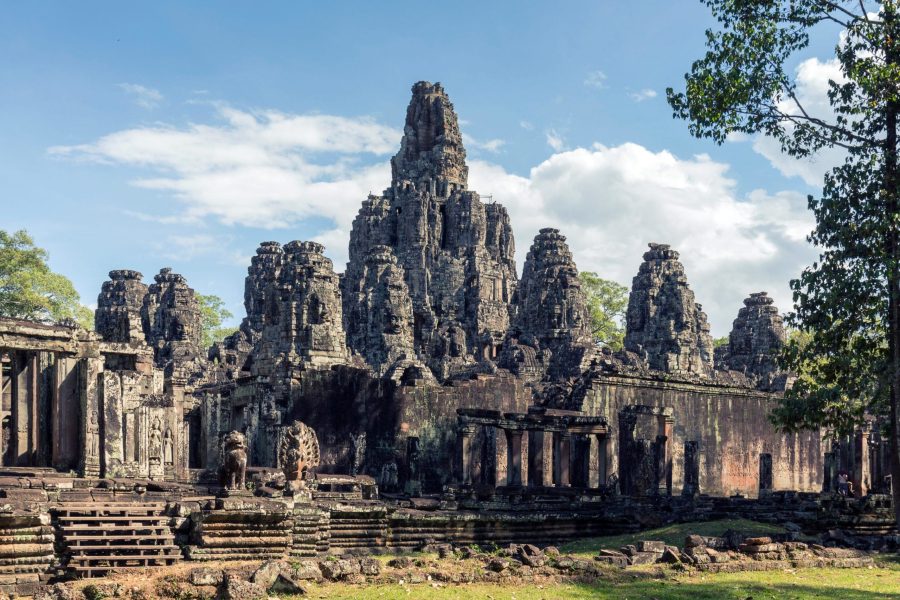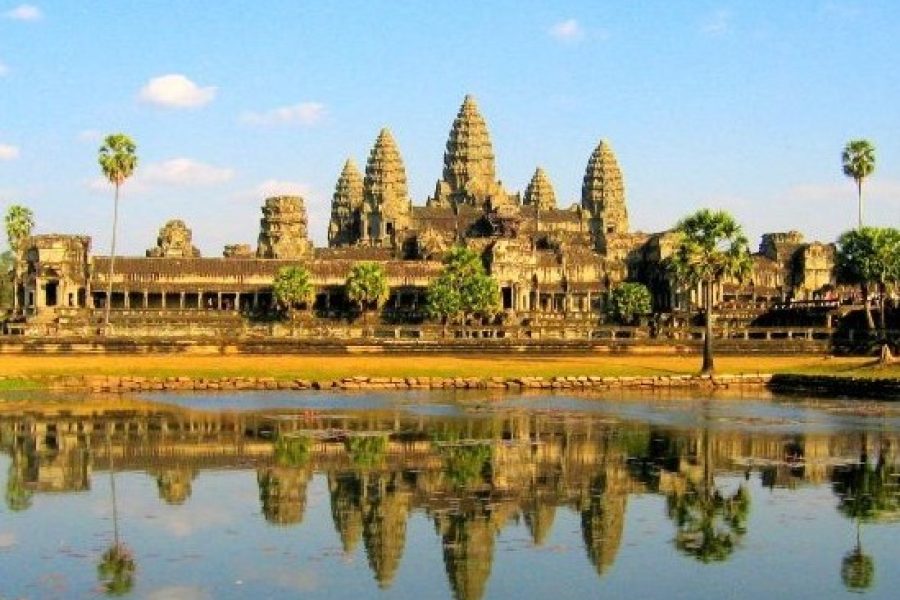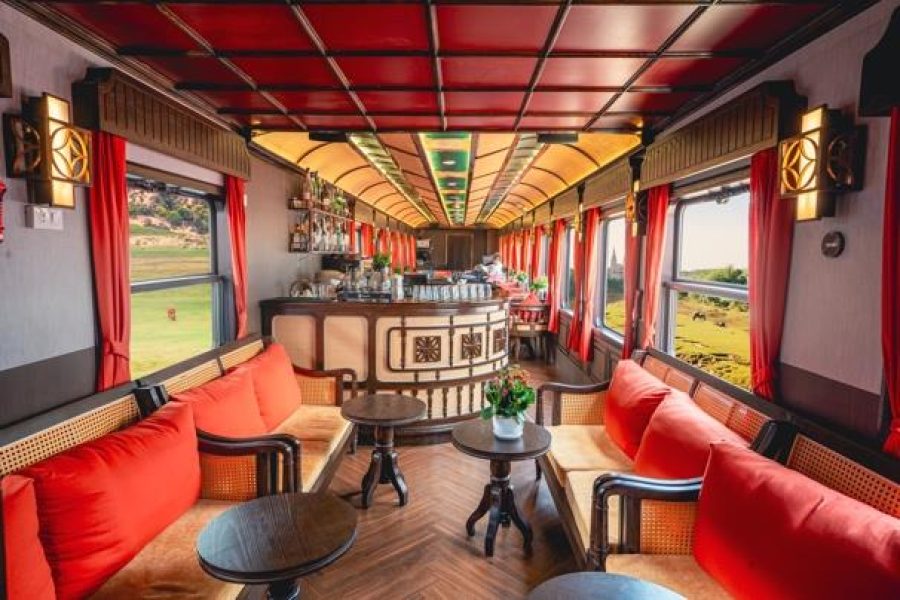5-star Phnom Penh Hotel
Raffles Le Royal is a luxury hotel in the heart of Phnom Penh, Cambodia. Operating since 1929, Raffles Le Royal offers a unique blend of colonial charm and modern amenities. The hotel’s location is ideal, as it is situated near many popular tourist attractions, including the Royal Palace and the National Museum of Cambodia. The rooms here are spacious and elegantly furnished, with many offering views of its lush gardens. The hotel’s facilities are also top-notch, with various dining options, including a French restaurant, a poolside bar, and a lounge serving afternoon tea. A spa, fitness center, and swimming pool also provide guests with ample opportunities to relax and unwind. Overall, Raffles Le Royal is an excellent choice for tourists looking for a luxurious and comfortable stay in Phnom Penh.
Address: 92 Rukhak Vithei, Phnom Penh
- Sofitel Phnom Penh Phokeethra
Sofitel Phnom Penh Phokeethra is an excellent choice for tourists looking for a luxurious and comfortable stay in the heart of Phnom Penh. This hotel has entertained many VIPs such as world presidents, and A-listers, and the facade alone explains why. The building combines French Colonial wealth with modern Khmer embellishments, so it has a classic appeal with a modern sense of luxury and comfort. The staff at Sofitel Phnom Penh Phokeethra is friendly, attentive, and always willing to help guests with any queries or requests. One of the standout features of the hotel is its excellent dining options. The hotel boasts four restaurants, each offering a unique culinary experience, ranging from authentic Cambodian cuisine to international dishes.
Address: 26 Old August Site Sothearos Boulevard, Phnom Penh
- Palace Gate Hotel & Resort
Palace Gate Hotel & Resort is the next option for you in our list of best Phnom Penh hotels. It’s actually a renovated French colonial villa, as evidenced by towering wrought ironwork, ceilings, and a magnificent staircase. Because the hotel is next to the Royal Palace, you can wake up with views of the palace grounds. The rooms are large and comfortable, with most having views of the pools or river. After a day of exploration, the outdoor swimming pool is a terrific spot to unwind, and the rooftop bar is ideal for sipping a nice drink while watching the sun set over the city.
Address: 44, Sothearos Blvd, Chey Chumneas, Daun Penh, Phnom Penh
This luxury hideaway Rosewood Phnom Penh, which opened its doors in 2018, remains one of the city’s finest high-end resorts. The sumptuous contemporary architecture of the rooms and suites is combined with indigenous accents; the best feature views of the Mekong River. There’s also an art gallery, an indoor lap pool, a spa, and a rooftop bar, which is ideal for drinking cocktails at sunset. Moreover, this hotel has an ideal location that is near many tourist attractions such as Wat Phnom, Sisowath Quay, Riverfront Park, and the Royal Palace. From the hotel, you can easily walk to explore Phnom Penh.
Address: Vattanac Capital Tower, 66 Monivong Boulevard, Sangkat Wat Phnom, Khan Daun Penh, Phnom Penh
Another 5-star hotel we recommend for you is Hyatt Regency Phnom Penh – one of the best Phnom Penh hotels. The hotel boasts of 247 guestrooms, including 43 suites, all of which offer spectacular views of the city skyline or the Mekong River. The rooms are equipped with modern amenities such as flat-screen TVs, mini-bars, and high-speed internet access to ensure a comfortable stay for guests. The hotel also offers several recreational facilities, including a fitness center, an outdoor infinity pool, and a spa that provides a range of rejuvenating treatments to guests. Additionally, for business travelers, Hyatt Regency Phnom Penh features meeting and event spaces that can accommodate up to 700 guests.
Address: 55 Street 178, Sangkat Chey Chumnas, Phnom Penh
4-star Phnom Penh Hotel
La Rose Suites is a great choice for tourists looking for a unique and sustainable boutique Phnom Penh hotel. One of the unique features of La Rose Suites is its colonial-style architecture and interior design that blends traditional Khmer elements with French colonial elegance. Each of the 25 rooms and suites is uniquely designed with traditional Cambodian artwork, handmade furniture, and luxurious amenities, creating a cozy and inviting atmosphere for guests. One of the reasons tourists should choose La Rose Suites is its convenient location. It is within walking distance to several popular tourist attractions, such as the Royal Palace, National Museum, and Riverside.
Address: 4B, Street 21, Sangkat Tonle Bassac, Khan Chamkarmon, Phnom Penh
Hotel Emion Phnom Penh is without a doubt one of the most distinctive boutique hotels in Phnom Penh. It’s a Japanese luxury hotel that offers a taste of Japan in Cambodia’s capital. The hotel’s large rooms are minimalist yet inviting and cozy, with high-tech elements that are particularly Japanese. Apart from the accommodations, there are numerous other reasons to like Hotel Emion Phnom Penh. There is a coffee and tea station in the foyer that is open 24 hours a day. A large infinity pool on the roof overlooks the confluence of the Mekong river and Tonlé Sap rivers.
Address: 192 Preah Sisowath Quay Sangkat Chaktomuk, Daun Penh, Phnom Penh
Baitong Hotel & Resort is a beautiful eco-friendly hotel in the heart of Phnom Penh. This hotel is a great choice for tourists who value sustainability, comfort, and convenience. One of the unique features of Baitong Hotel & Resort is its eco-friendly design and sustainable practices. The hotel uses renewable energy, water-saving technologies, and natural materials such as bamboo and wood to reduce its environmental impact. The hotel’s design is another standout feature. It features a contemporary Khmer design with a mix of traditional and modern elements, creating a stylish and comfortable atmosphere for guests. Baitong Hotel & Resort is an ideal choice for tourists who want a sustainable and stylish hotel in Phnom Penh.
Address: No. 10, St. 282, Sangkat Boeng Keng Kang I (BKK1), Khan Chamkarmon, Phnom Penh
- Aquarius Hotel and Urban Resort
Aquarius Hotel and Urban Resort is a trendy and stylish Phnom Penh hotel we highly recommend for you. The hotel features a contemporary urban design with a mix of industrial and natural elements, creating a stylish and comfortable atmosphere for guests. Each of room is uniquely designed with a blend of local and international influences, offering guests a comfortable and chic retreat. The hotel’s staff is friendly, professional, and attentive, providing personalized service to each guest. The hotel’s rooftop infinity pool is another highlight. It offers stunning views of the city, making it a great place to relax and unwind after a long day of exploring Phnom Penh’s cultural and historical landmarks. It definitely is a memorable experience for you.
Address: 240 No 5, St Sangkat Chakto Mukh, Phnom Penh
The ancient Hotel Cambodiana, located along the bank of the Mekong River, offers a quiet stay in the city’s downtown area. The rooms at this hotel are modest yet comfortable, and some have views of the river. A spa, steam room, swimming pool, sauna, and tennis courts are among the wellness amenities. After you’ve finished your job, head to the hotel’s L’Amboise restaurant for French classics like white-wine mussel and steak frites. Hotel Cambodiana will bring comfortable and cozy when staying here.
Address: 313 Sisowath Quay, Chakto Mukh, Doun Penh, Phnom Penh



















